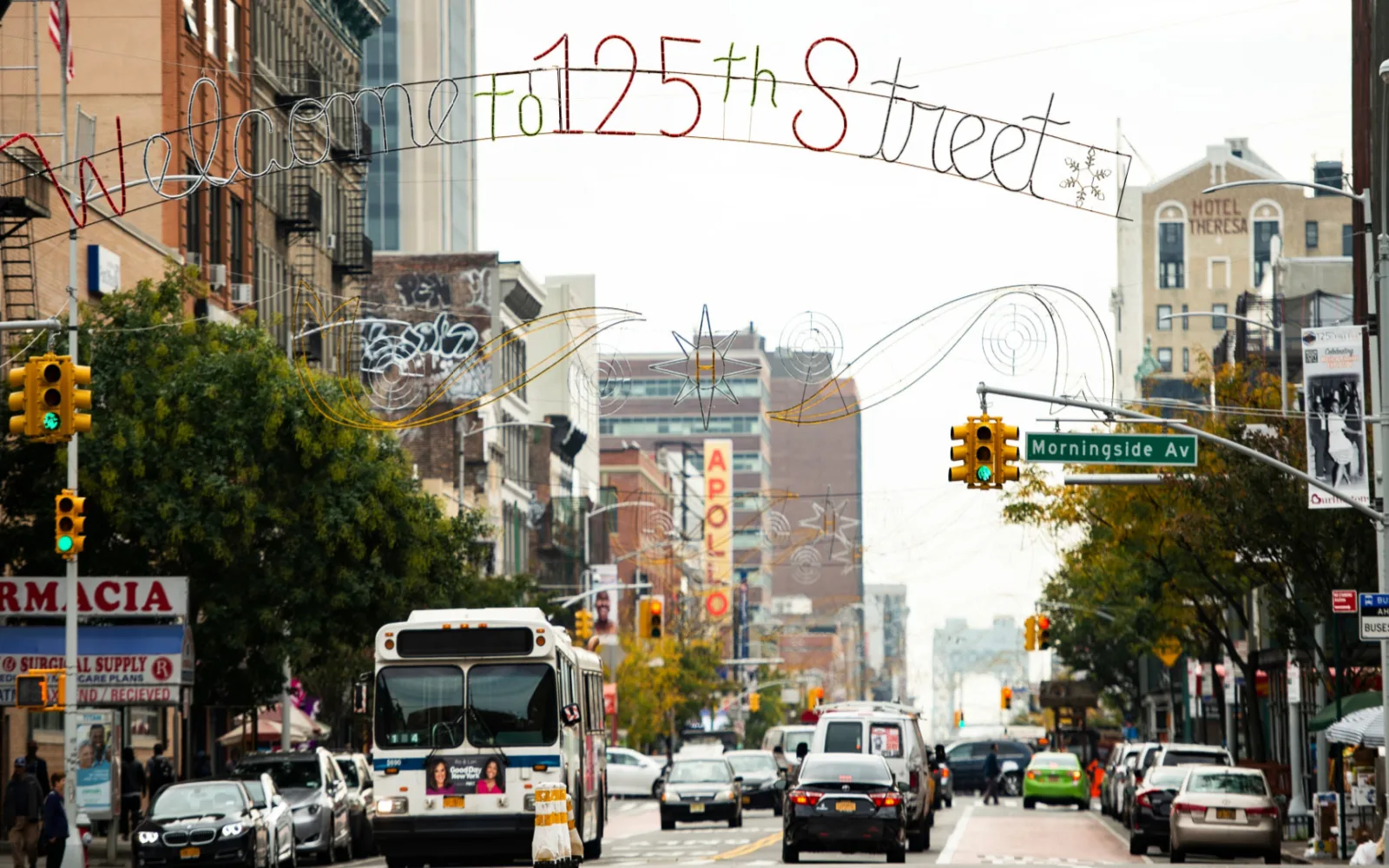Is Harlem safe to visit in 2025?
Harlem is generally considered safe to visit, but it’s a large neighborhood with variations in safety across its different areas. While some parts may have slightly higher crime rates, especially in East Harlem, the majority of violent incidents primarily involve local residents and individuals known to each other.
Harlem is one of the most famous neighborhoods of New York City due to its role in African American culture, specifically in the Harlem Renaissance. Every year, thousands of people visit to pay their respects to this cradle of history and culture.
Lovers of literature, history, and culture will know of Harlem from its role in the Harlem Renaissance, a flourishing of African American culture in the 1920s.
Today, you can explore sights relevant to this history, such as the Langston Hughes House and the famous music venue Bill’s Place. In more recent years, Harlem launched the careers of many music greats such as James Brown at the Apollo Theater.
Modern Harlem still has a vibrant cultural scene, with museums such as the Studio Museum in Harlem and the Graffiti Hall of Fame. Plus, check out the city’s famous food while you are in town, from soul food at Sylvia’s Restaurant to the contributions of recent immigrants.
Harlem is an iconic neighborhood to visit, but it also has a bit of a reputation as an unsafe area. In this travel guide, we uncover the truth about whether it is safe to visit Harlem or not.
Is Harlem Safe to Visit in 2025?
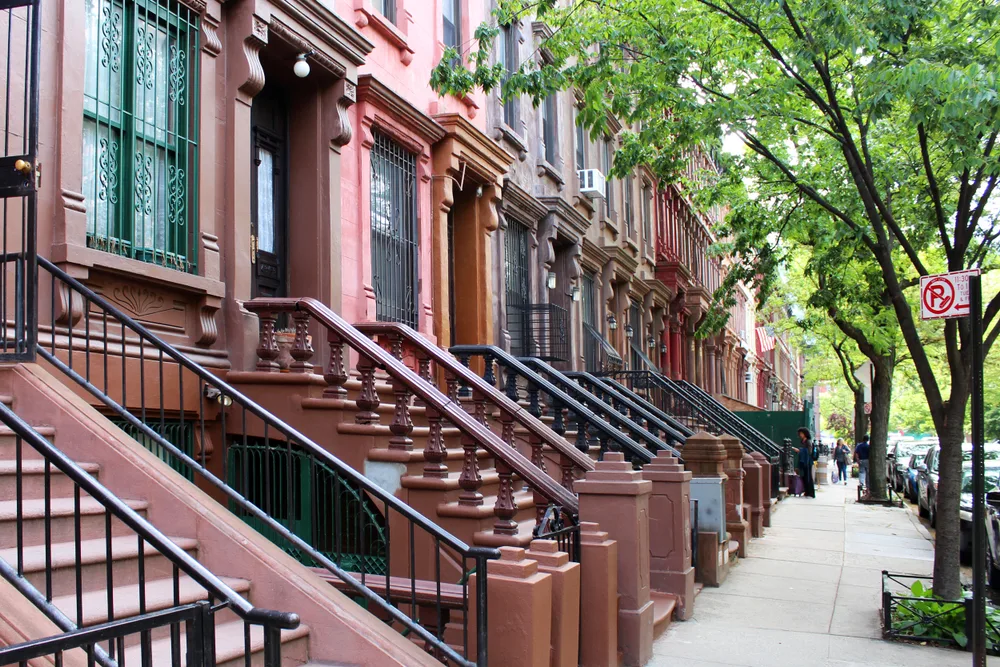
MisterStock/Shutterstock
Don’t let the rumors scare you away — Harlem is a safe place to visit! It does have a slightly higher crime rate than other places in New York City but remember that Harlem is a big neighborhood.
As long as you take the right precautions and stay in the good areas, you should have a safe trip to this iconic neighborhood. One thing to keep in mind about Harlem is how big the neighborhood actually is.
Ready to Book?
Unlock Exclusive Discounts on Expedia.com!
Got Travel Insurance?
Protect yourself for unexpected interruptions.
Compare Plans We may be compensated when you book after clicking on one of our links.Harlem is divided into East Harlem, West Harlem, and Central Harlem and stretches over much of the northern part of Manhattan Island. According to some estimates, the neighborhood is 4.4 square miles in area.
This means that parts of it may feel unsafe, while others are perfectly safe. Crime does occur in Harlem, sometimes at higher rates than in other parts of New York City.
Common crime incidents include:
- Petty theft
- Verbal insults and harassment
- Mugging
- Robbery
- Assault
Violent crimes such as assault and even homicide occur in Harlem. However, the vast majority of violent crime incidents affect locals or are part of reckonings between people who know each other.
Although you should take precautions as a visitor, you don’t have to act as if an attacker is waiting around every corner.
Many Harlem residents are frustrated by the perception that their neighborhood is unsafe. Some point out that statistically, some Harlem precincts have lower crime rates than parts of Midtown Manhattan where tourists spend a lot of time.
Many attribute this perception of Harlem as a crime-ridden area to racial bias. Harlem is not just one of New York City’s predominantly African-American neighborhoods, it is perhaps the most famous center of African-American culture in the city.
Associating a massive neighborhood with crime reminds them of racial bias that perceives African-Americans as less trustworthy. The best authorities on the safety of Harlem are probably residents themselves.
According to an online survey, 64% of residents report that they feel pretty safe in their neighborhood despite some concerns.
While Harlem has its fair share of problems such as crime, if most residents feel safe, you should probably feel relatively safe as a visitor as well as long as you follow their lead and take precautions.
Crime in Harlem
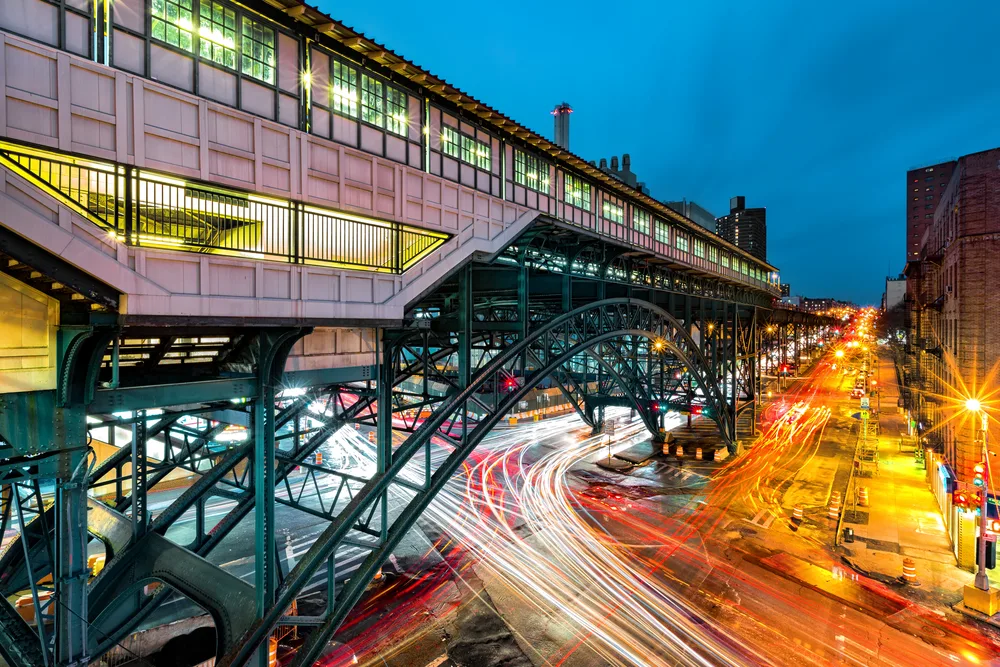
Mihai_Andritoiu/Shutterstock
Most people are primarily concerned about crime when planning their visit to Harlem. However, crime statistics differ drastically depending on which part of the neighborhood you are visiting.
In fact, some parts of Harlem have lower crime rates than neighborhoods traditionally considered “safe.” New York City helpfully publishes a map with crime data broken down by neighborhood and police precinct.
Harlem crime rates range from low to moderate to high, depending on the part of Harlem you are in. West Harlem is generally safe.
The 26th precinct, which covers Morningside Heights, Manhattanville, and Columbia University, reports a crime rate of 24 incidents per 1,000 residents. The most common crime is grand larceny, followed by assault.
The 30th precinct, which covers other parts of the western edge of Harlem such as Hamilton Heights, Sugar Hill, and West Harlem, reports even lower crime rates.
Here, the crime rate is just 19 incidents per 1,000 residents. Again, larceny and assault are the most common crimes. Grand larceny makes up about 37% of total crime numbers in this precinct.
Central Harlem is where most of Harlem’s popular tourist locations are located and where most tourists go. It has a higher crime rate than West Harlem but is still fairly safe.
The 28th precinct, which includes popular tourist attractions such as the Apollo Theater and the Studio Museum, has a crime rate of 27 incidents per 1,000 residents. The 32nd precinct covers parts of Central Harlem and the northeastern tip of the neighborhood.
It has a lower overall crime rate than other precincts that we’ve mentioned so far, but a higher violent crime rate.
Violent crimes make up 54% of crimes that made it onto the crime map (although the NYC crime map only lists major incidents, not misdemeanors). The 32nd precinct also has a high homicide rate.
East Harlem is definitely the most dangerous part of Harlem, and its precincts have higher crime rates than others in Harlem. The 23rd precinct, which covers East Harlem and El Barrio, has a crime rate of 25 incidents per 1,000 residents.
The rate of felony assault is particularly high, at about 29% of total major crimes reported. The 25th precinct contains the most dangerous part of Harlem.
This mostly residential area around the 125th Street-Metro North Station has a crime rate of 42 incidents per 1,000 residents. For reference, the precinct with the highest crime rate in New York City is actually MTS, which covers popular tourist attractions such as Times Square.
Here, the crime rate is a whopping 242 incidents per 1,000 people. Harlem used to be a much more dangerous neighborhood (residents would probably say because of long-standing government neglect).
However, despite a rise in crime in 2022 that was also true in all other neighborhoods of New York City, the crime rate has decreased drastically since their peak in the 1980s and 1990s.
You shouldn’t act completely clueless when you visit Harlem, but with the right precautions, you should be safe during your trip.
Petty Theft
Petty theft is the most common crime that affects tourists worldwide. It is the easiest to get away with for criminals, who often use crowds as cover.
Plus, it is easy to take advantage of someone who doesn’t know the area that they are in. Pickpocketing and petty theft are actually not nearly as much of a problem in Harlem as they are in other parts of New York City such as Midtown Manhattan.
The relatively few tourists mean that pickpockets don’t operate in the area. More common forms of theft are those that affect residents, such as vehicle theft. However, petty theft can still happen.
Common locations for petty theft are around the Metro-North Station on 125th Street, where you may have to change trains if you are taking a day trip outside of New York City, in subway stations, and on the subway trains themselves.
Take basic precautions to secure your valuables against this crime. Never flash lots of cash or expensive jewelry that might single you out as a potential target.
Put valuables in a secure place, such as a zipped bag. Be wary around common pickpocketing tactics, such as groups standing near the doors of the subway car forcing you to squeeze past them.
Robbery
Most people are worried about more violent crimes when they visit Harlem. Violent crimes rarely affect tourists as most incidents happen between people that at least are acquaintances, or in places where tourists rarely venture.
However, the exception is robbery or mugging. These violent crimes sometimes affect tourists in Harlem. Robberies are often the most common violent crime in Harlem police precincts after assault.
Most robbery incidents in Harlem occur at night. Save your explorations of unfamiliar areas in the neighborhood for the day.
If you are walking around at night, stick to main streets, avoid poorly lit alleyways, and try to walk with a group. Definitely don’t go into any parks at night, including the northern part of Central Park, as those tend to be where the most criminal incidents occur.
If you do get robbed, hand over your wallet as quickly as you can and focus on getting away safely.
You don’t want to fight back because the robber could escalate into a more violent incident. To make sure that even if you do get robbed it isn’t devastating, you can store some cash in other parts of your clothing outside of your wallet just in case.
Avoiding Bad Areas
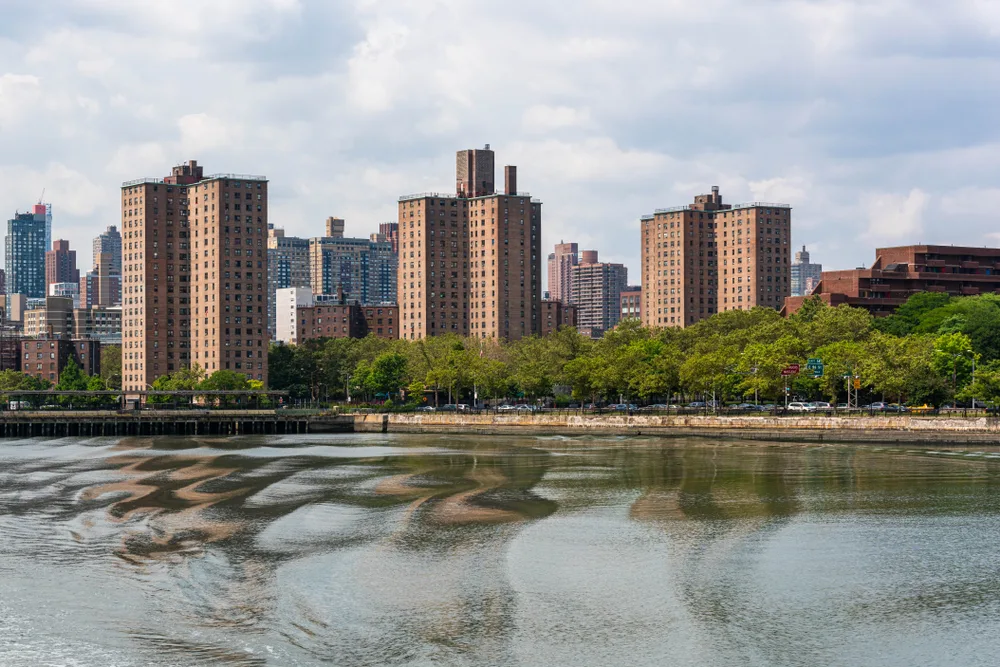
KazT/Shutterstock
Since crime rates differ so drastically in Harlem depending on where you are, it’s a good idea to steer clear of bad areas. Generally, East Harlem is less safe than West or Central Harlem.
You should avoid this part of the neighborhood at night. During the day, it is safe to visit, but walk with purpose and take precautions to keep yourself safe. Another general rule is that the further north you go, the crime rate tends to increase.
Generally, the neighborhood tends to be fairly safe south of 125th Street. Harlem has many beautiful parks, but don’t go into them at night. Crime rates increase in all parks around Harlem after dark.
Frequently Asked Questions
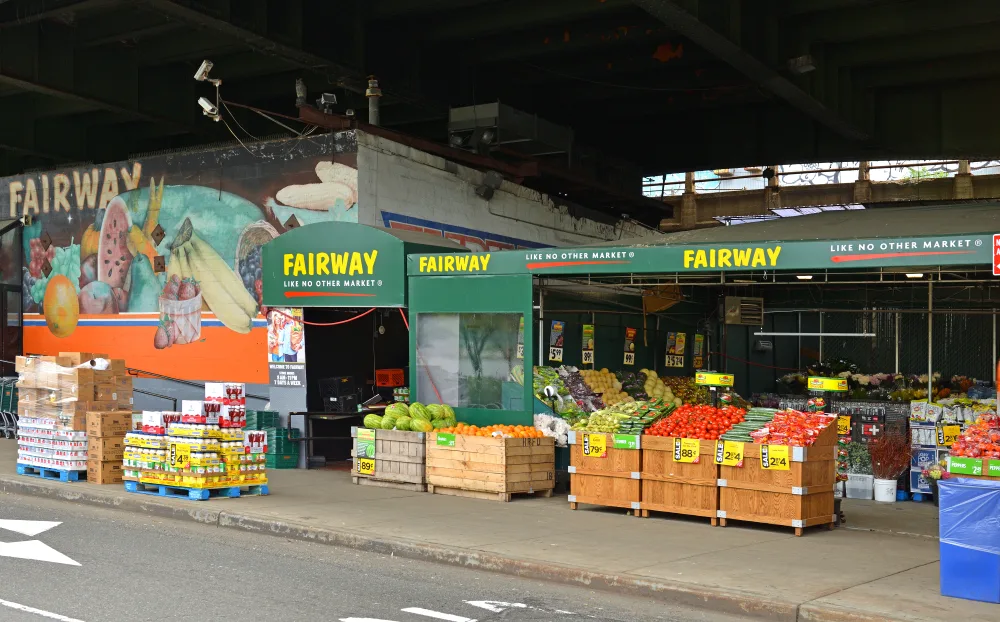
NEW YORK, USA – MAY 10, 2019: Fairway Market in West Harlem (2328 12th Ave)/Popova Valeriya/Shutterstock
Here are some common questions that you might want answered before visiting Harlem:
Is it safe for tourists in Harlem?
More and more tourists are visiting Harlem, which is a sign that the neighborhood is safe. There is a moderate level of crime in the neighborhood, so just make sure you are street smart.
Is Harlem a good area in NYC?
Harlem is a great area of NYC. It has a vibrant culture, great food scene, and has been a beloved home for many residents for many years.
What Is Harlem known for?
Harlem is known primarily for its role in African-American culture and history. It was the birthplace of the Harlem Renaissance, an important cultural movement in the 1920s, and has played an important role in culture ever since.
Is it safe to walk in Harlem during the day?
Yes, most of Harlem is safe to walk during the day. You might walk through some impoverished areas, but this doesn’t mean that those areas are unsafe.
Can you walk around Harlem?
Yes, most of Harlem is safe to walk around. Plus, it has great pedestrian infrastructure, just like the rest of New York City.
So, Should You Travel to Harlem?
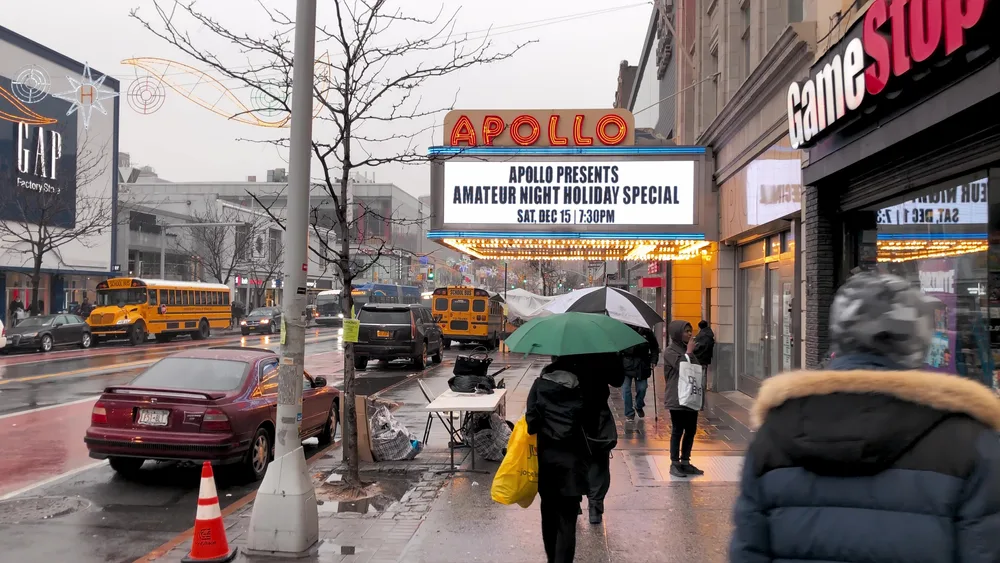
NEW YORK CITY – DECEMBER 2018: Harlem streets on a rainy day with people and traffic. Slow motion/GagliardiPhotography/Shutterstock
You shouldn’t let rumors scare you away from visiting Harlem. As long as you do your research on which parts of the neighborhood are safe and prepare for any potential dangers, you should have a great time visiting. Happy travels!



